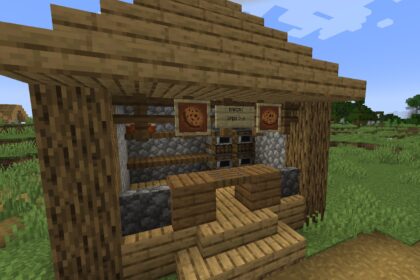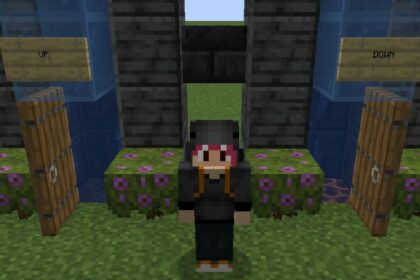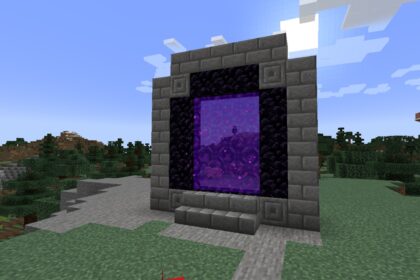Terracotta is a solid block in Minecraft that has some of the largest color and texture variety of all the blocks you can find and craft in the game.
Originally it has plenty of colors, which can further be expanded to add more texture and patterns to them, allowing for many combinations and design choices.
Though finding terracotta isn’t as easy and it takes a bit of understanding to get the patterns right.
Where to Find Terracotta
Terracotta can be found naturally spawning in the badlands biome, which is relatively uncommon to come across.
This entire biome is usually covered in terracotta, which makes up all of its landforms. The ground, mountains, and the inside of these areas are always made of terracotta. Usually, the types you find here comes in layers and a few colors.
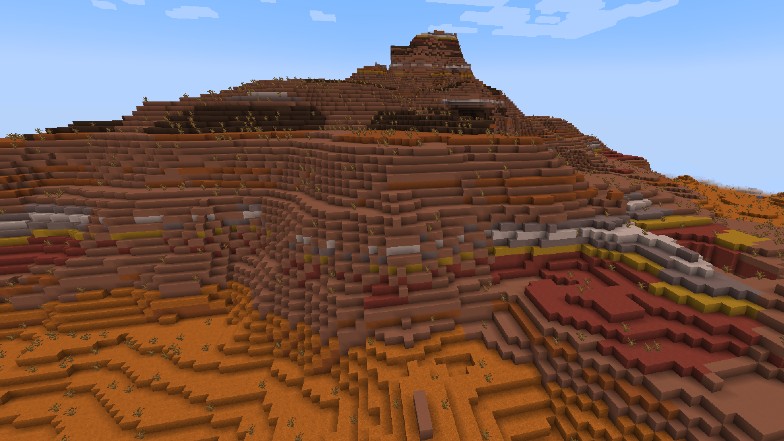
These colors are natural and you can spot them easily.
Other places that also spawn terracotta are:
- Villages (part of houses that give color)
- Desert biomes (Pyramids)
- Underwater ruins
However, in all of these places the amount of terracotta you will find is very small, compared to the sheer amount that can be mined in the badlands.
There is also a rare chance that a stonemason villager will be able to trade you a single block of terracotta for a single emerald.
Making Terracotta
While running around the Minecraft world you must have surely come across clay. Usually this block is found underwater, especially in rivers where it can be mined with a shovel.
After being mined a clay block will drop a clay ball, which can then be cooked in a furnace to give a brick, which is then used to produce brick blocks.
However, if you collect enough clay balls to make a clay block (or mine it with a silk touch enchanted shovel) you will be able to cook it to get terracotta. Terracotta can only be made from full clay blocks.

When cooked a clay block will give you regular terracotta, which is kind of orange in color.
To be able to dye the terracotta into different colors you will need to have a total of 8 terracotta blocks on your person. Then you need a single piece of dye to dye them all.
In total there are 16 different colors you can dye your terracotta in.
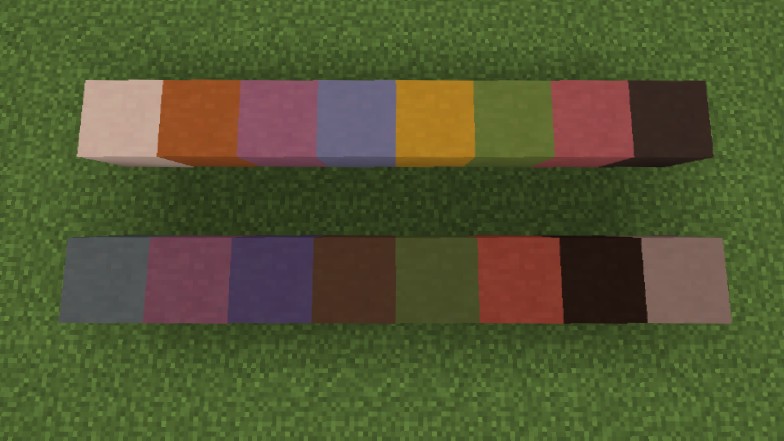
Because of this variety, mixing terracotta with wool blocks allows for a great way to build large replicas of items, like a large sword statue!
Making Glazed Terracotta
Once you have made your terracotta blocks and dyed them, you can make them into their patterned version known as glazed terracotta.
To make glazed terracotta all you have to do is cook your dyed terracotta one more time in a furnace.
Just like how there are 16 different colors of terracotta, there are 16 different types of glazed terracotta. Each type corresponds to a color and has a very detailed pattern covering the block.
Each block of glazed terracotta has a different variation of its pattern on each of its sides which you can see depending how you place the block down.
The full picture can be seen with each color if you put them down in a 2 by 2 configuration which will form a picture or pattern. A single color of glazed terracotta can have a minimal of 4 “basic” patterns depending on which side you are placing the block on.
In the image below you can see some of the patterns.
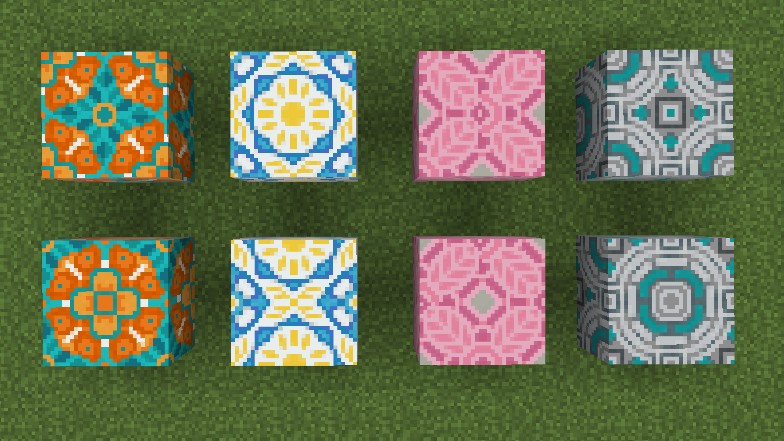
It helps a lot to pay attention to the corner of each glazed terracotta block and align them accordingly.
The blocks were design to blend together with their patterns, whether you’re putting them in a straight line or a 2 by 2 configuration.
Different colors of glazed terracotta can also have their different patterns merge and come together to allow for more intricate designs. This means that there are even more design and pattern combinations if you mix the colors together.
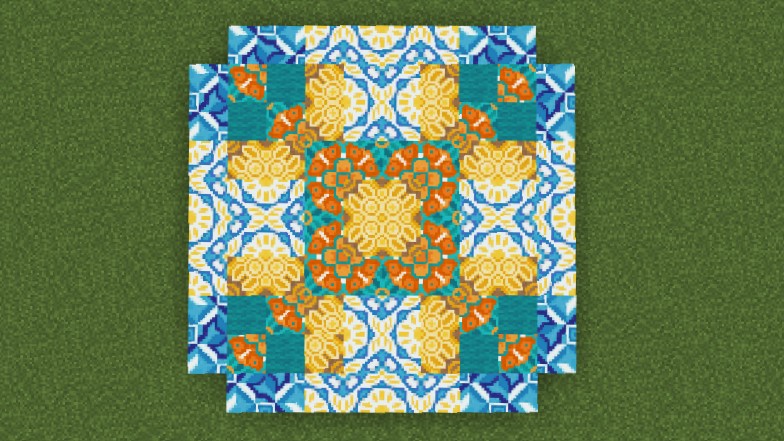
Originally, this was inspired by Moroccan style bathrooms which feature intricate floor designs.
Depending on the color of your glazed terracotta, you can also see some slight easter eggs in them.
For example, a cyan glazed terracotta features a creeper face in its pattern, while magenta has directional arrows.
Glazed terracotta can really come in handy if you are trying to build a mansion and need an intricate floor design for your foyer or living room.

